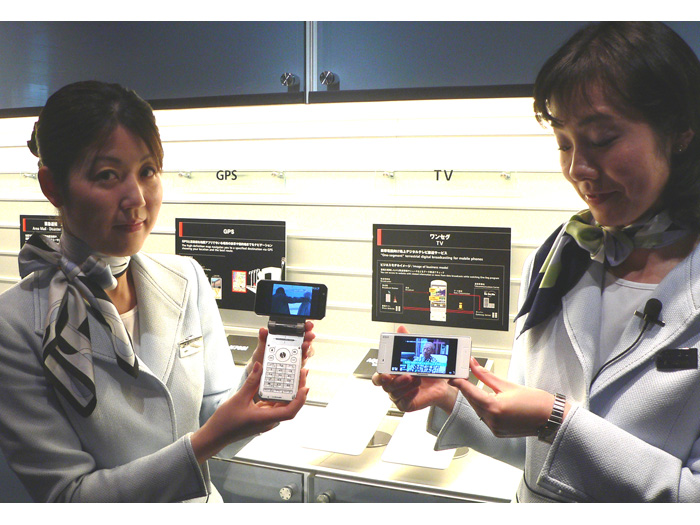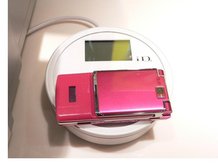Japan report: previewing the phones of the future
How NTT DoCoMo is years ahead of UK networks - and what it means for you

NTT DoCoMo is Japan’s market-leading mobile phone provider. And where DoCoMo excels is in its uncanny ability to stay ahead of the technology curve.
Just look at the mess China has itself in as it struggles to introduce a 3G mobile network in time for this summer’s Olympics.
While Beijing struggles to set up even a trial 3G network using its own TD-SCDMA standard, DoCoMo has had a commercial service called FOMA (using W-CDMA) in place since 2001.
Not only that, but it has concrete plans for the next step on the road already – Super 3G wireless networking with download speeds of up to 300Mbit/s.
Doing mobile communications
First, a quick backgrounder – DoCoMo, whose name comes from the slightly daft phrase ‘Do Communications Over the Mobile Network,’ was founded in 1991 and reported revenues of ¥4.7 trillion, or £23 billion last year.
That 53 million-strong cadre of customers represents 52 per cent of Japan’s entire mobile phone market – next best is KDDI with 29 per cent, followed by Softbank Mobile on 18 per cent.
Get daily insight, inspiration and deals in your inbox
Sign up for breaking news, reviews, opinion, top tech deals, and more.
DoCoMo’s success story began in earnest when it launched the i-mode-branded mobile internet service in 1999. Since then, not only have customer numbers been growing almost constantly, but so – significantly - has the company’s reliance on income from data traffic.

More recently, the introduction of the RFID-based Osaifu Keitai (Wallet Mobile) technology in 2004 has increased the importance of data fees to the company.
Want to know more? We've already covered Osaifu Keitai in our article: The next big thing for your mobile phone.
It’s about the data
Moving forward to 2008, DoCoMo and its competitors are currently engaged in a fierce and costly battle to offer new handsets packed with everything from TV tuners to news tickers, barcode readers and plenty more just to appeal to a wavering, near-saturated market.
Consequently, customers like me have frequently been disappointed with phones that are plain unwieldy because of the amount of electronics they contain simply to keep up with the Joneses.
This is because leading wireless carriers like DoCoMo need to find ways to get customers using their phones for more than just talking and for longer periods. But the problem is, not every new bell and whistle generates profits, or even any income at all.
Which is precisely what the company explained to us when we visited for a briefing earlier this week. PR manager Shuichiro Ichikoshi told us, “Adding such extra services, like 1-seg [the digital TV service tailored for mobile phones], is quite controversial, as it just costs us money.
“Also, it has a tendency to make phones bulkier, especially some of the big ones, such as Panasonic’s recent Viera phone. But is possible to find a balance if makers build them with lower-resolution screens. Still, we’re always looking for a way to monetise these ‘lifestyle’ services.”
And there, from the horse’s mouth, is the core of the problem facing all modern carriers struggling to maintain the bottom line – so-called lifestyle services. But what are they going to be, if TV and the like aren’t bringing home the bacon?

The Japanese future imperfect
To answer that question, DoCoMo’s crack squad of powder-blue-suited spokesmodels ushered us off to see the company's vision of the future in a specially constructed facility on the 29th floor of a Tokyo skyscraper.
First stop was a mini cinema showing two of those ‘vision of the future’ corporate films that tend to have precisely the wrong effect. These didn’t disappoint. You can watch them yourself.
DoCoMo’s vision of the year 201X centres on an unnaturally cheery boy with a broken foot who appears to interact with his parents mostly by remote video-conferencing. He talks to his doctor via a rehab robot that checks on his ailing leg and beams data back to a hospital, somewhere unknown.
J Mark Lytle was an International Editor for TechRadar, based out of Tokyo, who now works as a Script Editor, Consultant at NHK, the Japan Broadcasting Corporation. Writer, multi-platform journalist, all-round editorial and PR consultant with many years' experience as a professional writer, their bylines include CNN, Snap Media and IDG.